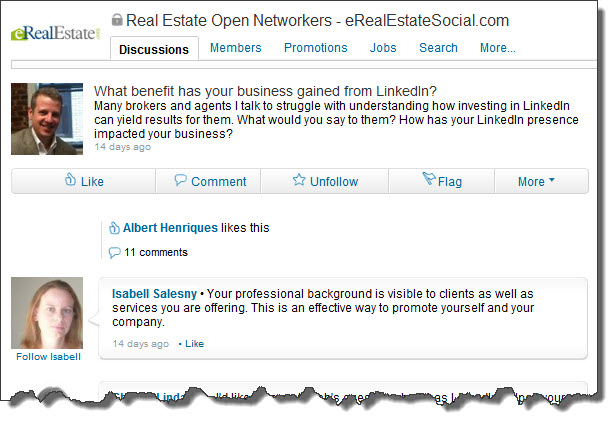Josh Turner’s background is as a finance guy…serving as the CFO for a few companies in the construction industry.
He got tired of working for others, however, and decided it was time to go out on his own. So he founded Gateway CFO Solutions which offers outsourced CFO services for small businesses that don’t have their own internal finance team.
Only problem was he was young, and didn’t have a lot of money to burn on marketing. But he did have a strong network of connections on LinkedIn, where he had been active since 2006.
Through a lot of trial and error, he discovered a formula that helped him build his reputation, make highly targeted connections with prospects and referral sources, and grow his new business.
He was so successful doing this that his clients and others started asking him for advice on how they could use LinkedIn to grow their own businesses.

That led to him founding LinkedSelling.com, a company that designs and manages LinkedIn campaigns for businesses. Building on the success of that company, Josh recently launched Linked University, an online training program for how to grow your business on LinkedIn using the strategies Josh used to build 2 successful business and help clients across the globe build theirs.
In this interview, Josh shares some of his top strategies for growing your business using LinkedIn.
1. Tell us about 1-2 changes you’ve made on LinkedIn (either for you or a client) that have had the biggest impact on conversions.
The “changes” we make are typically about targeting the right people. The awesome thing about LinkedIn is that we can quickly shift focus toward a new set of prospects. It’s often that we focus on a certain “prospect profile” for a certain period of time, specifically connecting and building relationships with a set of potential buyers, keeping the message in front of them, and positioning a brand as a true leader. We’ll adjust the components for different types of prospects.
It’s about having a multi-faceted approach, in which you have a really clear understanding of who your business is trying to reach, defining the major types of prospects that exist, and reaching them each in the most effective manner. So the changes we make that have the biggest impact on our client’s conversions are more about shifting tactics and/or timing to get in front of the right people in the most effective manner.
Here are a few examples…
One of our clients was struggling to get any results. He had tried on his own to connect with people and “optimize” his profile, but it wasn’t yielding anything tangible.
What he was missing was a content strategy to integrate into LinkedIn. We helped him put a plan together to develop brief articles that really spoke to the needs and pain points of his customers. We then developed a specific strategy for distributing this content to the right places and in front of the right people.
That’s resulted in a 900% increase in weekly traffic to his site. This has been sustained as well, with these higher traffic levels persisting as he has stuck with the plan. This has led to big increases for him in terms of new email signups, and real leads. The moral of the story here is that he didn’t have a plan for demonstrating expertise and value, which we changed.
Another client was literally doing nothing with LinkedIn. Their industry is very old school and they were skeptical that LinkedIn could even work. The great thing is that sometimes this makes it work even better, because it’s such an opportunity to stand out. We helped them develop a direct outreach system, specifically targeted to the right kind of prospects, and executed it weekly. We utilize LinkedIn’s messaging system combined with their various search tools, to get it done.
In the first six months of this company’s campaign, we generated at least 24 highly targeted leads that can be directly attributed to LinkedIn, including one multi-year deal worth at least $2.5 million. These are very high price point products and services, sold into a very specific market. That’s a big change, compared to their old LinkedIn presence which was little more than an online business card.
2. What’s the the biggest mistake LinkedIn users make that sabotage the results they get?
The biggest mistake you can make is trying to sell somebody. People don’t want to be sold to on LinkedIn. The right way to convert within a LinkedIn campaign is to position yourself as a trusted, expert resource. Provide content that truly helps your prospects, without asking for anything in return, and do it consistently. When the time is right, you’ll be the one they think of. Yet, this takes hard, creative work with an eye toward the long term. And a lot of people either don’t get it or just don’t want to do the hard work. So they’re trying to shortcut the process and use the platform to blast their message at people, and not getting much traction.
3. It can be a challenge to accurately measure results on social media platforms…what strategies, tools, etc. do you use to gauge the success of LinkedIn campaigns?
We work hard to identify not just the broad type of prospect that our clients want to reach, but also to define an exact set of ideal companies that they want to do business with. By tracking all of this and working to reach the right decision makers, we quickly know when we see a success.
For us, the first type of success is a legitimate lead and of course the goal is to see that lead turn into a sale. We work closely with our client’s sales and marketing teams, integrating LinkedIn with everything else they’re doing. We see success as it’s happening on the front lines of the conversation developing with prospects all over the world. So that’s the strategy we use to gauge success. A lot of it is real, human work.
As far as specific tools, we track most of it in spreadsheets and to some extent Google Analytics.
4. What are the top 3 metrics you check when it comes to how LinkedIn is working for you and your clients and what are you looking for in each?
1. Sales generated – What impact is our LinkedIn campaign having on sales?
2. Leads generated – What kind of lead activity is the campaign generating?
3. Traffic generated – How much traffic are we driving to other web properties, as well as more targeted goals such as email signups, etc.
5. Do you ever use dedicated landing pages on a customer’s website for LinkedIn traffic? If so, can you share an example of how this works?
Yeah, all the time. Depending on what we’re promoting, it’s usually related to an event (webinar) or a free report of some sort. We will promote the “landing page” in a number of ways including messaging campaigns, group postings, group announcements, status updates, etc. The goal is to generate leads and get people deeper in the sales funnel. This kind of strategy is a great way to achieve that and of course it can be easily tracked. But it all has to be done in the context of building real relationships. Just going on LinkedIn and blasting people with a link to download a free report…that’s not going to get results. If you cultivate a community of prospects where you’re looked upon as a trusted resource….then you’ll have far greater success in gaining traction with these types of promotions.
6. If a LinkedIn user only has time to focus on 1 thing for boosting their results/conversions on LinkedIn (ie. content in their profile, group memberships, increasing connections), what would it be and why?
Content in your profile is key, including having the right call to action to really convert from “profile views” to real leads.
But as far as an ongoing tactic that can yield the most results, I would recommend getting involved in the RIGHT groups. Join highly targeted groups where your ideal client is hanging out. Develop content that speaks to these people and delivers real value. Consistently engage in these groups, and share your content in these groups. Over time they’ll see you as the expert, and it will drive thousands of visits to your site.
7. Do you have a favorite software/tool that you use to help maintain/optimize LinkedIn profiles?
We’re a Hootsuite Solution Partner, and we use Hootsuite more than any other software or tool for LinkedIn execution. We don’t use any software specifically related to optimizing profiles. We use it for monitoring and in the right situations, distributing content and updates.
If you’re interested in learning more from Josh about LinkedIn, you can get his free training videos and learn the 5 principles, and biggest secret, of every successful LinkedIn marketing plan here.


















